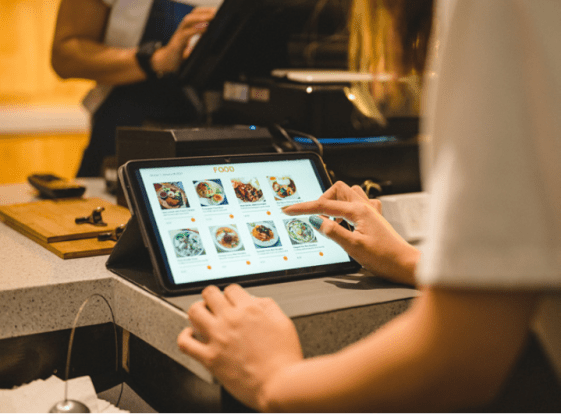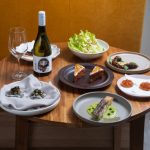There’s much to think about when running a hospitality venue. Has the roster been done? Did I order the meat from the supplier in time? Has the drinks menu been updated?
It’s more than understandable that posting on social media or sending out EDMs often falls by the wayside. But it’s also essential to think about the landscape and how it’s evolving. There are more venues than ever opening now, which means you need to think big-picture beyond running $1 oysters for a week or two-for-one spritzes. You want your venue to go the distance — here are some tips to kickstart your marketing strategy this year.
Get your venue listed
There are many platforms guests rely on when choosing where to have
their next meal. And while you can’t control if your venue makes city lists
or roundups from traditional media, it’s well worth reaching out. If you’re
working with a PR agency, put together a list of publications you’d like to
be featured in and have an account manager pitch to editorial teams with
information about your venue as well as an invitation to come in. While
comped meals come at a cost, dining experiences can be capped and
it often pays off if your venue is publicised on a national platform with a
large audience. You can also list your venue on Facebook, TripAdvisor, and
Foursquare to expand your reach and target a wider demographic who
may not use Instagram or TikTok.
Create unique and high-caliber content
Food content is big business on social media and it’s time to take a multifaceted approach to posting. While grid posts and 24-hour stories are the bread and butter of Instagram, video content is still paying off when it comes to reach and engagement. Recently, video content shot and posted horizontally has come into play, with the format requiring social media users to stop, turn their phones, and watch — every second counts.
The format works well for food and bev accounts: for example, you could shoot a chef demoing a dish using a wide lense that captures the movements of the culinary team in the background. This can be done yourself or by a professional videographer or content agency. Regardless, it’s important to use equipment and software that results in aesthetic videos.
If your content is lacking, it’s not going to resonate and the analytics will show that, so there’s no shame in reaching out to content creators and seeing how you can work together. Paid advertising should also be invested in on a regular basis to ensure your content is reaching the right audience and bringing new customers in.
Establish your digital presence
This one goes without saying and the following platforms are essential: a website, Google business profile, and social media accounts. Websites have been overlooked in favour of social media in recent years, but a landing page is a must.
After Google reviews, most customers want to see a menu hosted on an easy-to-navigate website. Your website’s design should mirror the colours, fonts, and tone of voice used both in-venue and on social media accounts. For example, if your business is minimal by nature, the same approach should be taken with the website.
Your website should also contain click-through tiles to social media accounts, contact information, a feedback form, a reservations section with a bookings policy, and opening hours. An additional ‘about us’ tab is also useful, as well as a gallery of professional photography of your venue and food and beverage.
Create a database and build relationships with customers
Make your bookings and POS systems work for you and take the time to crunch the data these platforms provide from diner demographics to spend, order history, dining times, frequency, and occasion. All this information can help you create targeted campaigns and send them to segments of your database. The point of EDMs is for readers to take action, so if you know a customer has dined at your venue for an anniversary or a birthday in the past, send an email in the lead-up to the occasion with a special offer — it could be anything from a complimentary glass of Champagne to a dessert on the house.
Newsletters are also an opportunity for venues to connect with customers on a deeper level and are a great medium to not only provide updates, but to talk more about the story of a venue from where produce is sourced to staff member spotlights. Connectivity is a key part of hospitality which should continue once a patron leaves your venue.
Partner with delivery services
While the Australian landscape has seen key delivery players fold, delivery is still big business for customers who are after convenience. Having a listing on Uber Eats or DoorDash is also a form of advertising, with many businesses able to reach customers who may have never heard of their venue before. But profiting from delivery should be front of mind, which means condensing
your menu and pricing it accordingly.
Some items just don’t travel well and you don’t want to risk jeopardising your reputation over a wilted salad. Focus on items that are delivery tried and tested — think pizzas, burgers, fries, flatbreads, noodles, and curries — these items can hold up during travel and get to the customer in the same condition as you sent them. Service fees should also be negotiated where possible — it’s always worth asking a delivery representative if they can reduce the cut or if they can spotlight your business on the app’s homepage.
Invest in events
Collaborations with chefs, bartenders, sommeliers, and other hospitality professionals are a great way to introduce your venue to new guests. One-off events are also a gateway for return patrons to enjoy a different experience to what you normally provide — for example, a café hosting dinner for the first time or a bar doing an outdoor BBQ night.
PS40 in Sydney run a regular collaborative series called Takeover Tuesday which sees both established and up-and-coming chefs put together unique
menus that showcase their food ethos. Chefs design a range of snacks that are teamed with PS40’s cocktails, with culinary talents from Oncore by Clare Smyth, Ester, and more taking over the kitchen. Collaborations are a means to make connections with your fellow hospitality peers and limited experiences are always in demand.
Drum up reviews
Incentivise customers to leave reviews about their dining experiences while
they are in-venue. Of course, pressuring customers to post five-star reviews
should never be done, but it’s well worth providing some messaging at the till
offering a discount for their next dining experience if they leave a review on
Google or another platform. This is also a gateway to capture diner data such as an email address, which can be added to your all-important database.
Develop a brand identity
Ideally, this is done before a concept launches, but it’s never too late to iron out the basics of your brand. Branding covers everything from your venue’s name to the typeface on menus, colour scheme, tone of voice, content style, packaging, merchandise, and even atmosphere.
An excellent case study in branding is Nu Dake in Seoul, Korea. Every part of the patisserie’s shopfront has been considered by the design team, with pastries displayed on a table bookended by a giant croissant statue and another located near the register, which sees customers flock to take photos next to it.
Croissants are everywhere — from the feet of a plush sofa, to the backs of chairs and the wall outside. Staff wear uniforms with — you guessed it —
croissant motifs complete with a pair of croissant Crocs. It could be easy to veer into kitsch territory here, but the execution of the space conveys the brand so well.
Most customers who come into the store post about their experience on social media, which means there’s constant messaging broadcasted to a global audience. The point is that Nu Dake offers customers more than just pastries — it provides a unique experience beyond food and beverage that is anchored by the DNA of the brand.
The post Everything you need to know about marketing your hospitality business appeared first on hospitality | Magazine.
































